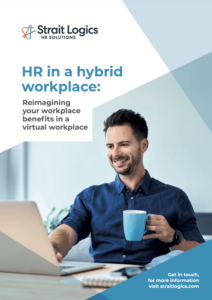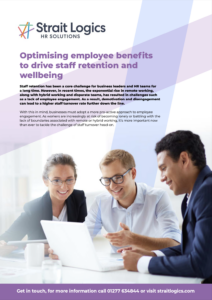
As workers retire later, and Gen Zs continue to enter the workplace, we’re seeing a huge range of age groups in every workforce.
Whether it’s Baby Boomers, Generation X, Millenials, or Gen Zs, the differences between different age demographics have been a topic of dispute for HR teams for a long time.
While we’d like to think all age groups would agree that workplace perks can only be a good thing, what one generation might want from their employer could be very different from another.
That means HR teams have a challenge on their hands. Getting workplace rewards right for different generations and providing the right support, training and incentives for all staff without any age group feeling alienated or disillusioned is tough.
So how do HR teams navigate benefits for different age demographics? We’ve done a little digging to give you some best practice tips and tricks to engage the youthful, and the more mature workers in your organisation.
Be mindful of the age gap
As older workers work longer before taking retirement, HR teams have around four generations to take into account, each with their own disparate characteristics, values and priorities. While a balance of different age demographics in the workforce is a great thing for team productivity, critical thinking and diversity, the variety in what might engage each age group will present a challenge when it comes to keeping every worker happy.
It’s important to be aware, at the hiring stage, that the age of different candidates will have a bearing on their core values and career drivers. Some organisations might be keen to hire younger candidates with ambitions to climb the corporate ladder, while others might be looking for a candidate with more experience under their belt. Either way, having a mixed and diverse workforce makes for a well-balanced skillset and levels of experience within the team.
A recent study by the CIPD outlined some core differences between working age groups, with those aged 25-40 prioritising the core value of feeling appreciated, with things like trust, recognition and accountability high on the agenda. On the other hand, those in the 40-65 age group were more concerned with the practical aspects of their job role such as work-life balance and flexibility.
In terms of preferences when it comes to workplace benefits, recent findings by the job board organisation, CV Library found that most age groups will prioritise salary, while Gen Z (those aged between 16 and 24) will look for a workplace with friendly colleagues.
It’s important not to approach your benefits strategy with a ‘one-size-fits-all’ approach. Being mindful of and celebrating the core differences of each age group is crucial here.
How to build age inclusivity into your benefits strategy
It’s important to know your workers, and understand what makes them tick, both in terms of their careers, and their pastimes. Ultimately establishing what they want from an employer is key.
The best way to understand what your employees’ priorities are is to ask the question. Employee surveys are a great way to glean general workforce sentiment and morale, as well as give an idea of what types of benefits might fit best for the needs of every individual.
We’ve put together a few ideas on how to build age inclusivity into your benefits portfolio, and make sure none of the age demographics of your workforce feel alienated.
- Fair remuneration
While extra bells and whistles are great, when it comes to workplace perks, one of the biggest drivers for employees is still salary, regardless of age demographics. According to the CV-library study, salaries were most important to most professionals regardless of age. Wanting a better salary is still one of the most common reasons that employees leave their job roles. That means fair remuneration should be a priority before you think about any additional benefits. While Salary is key, it’s important to also think about other schemes that might appeal to your workforce’s financial side. Incentives such as employee share schemes and share ownership have become a popular option for organisations looking to drive staff loyalty and retention.
- Better financial futures
Financial health perks in general are very much on the radar for employees right now. As we all navigate a cost-of-living crisis and we debate whether we’re heading into a UK-wide recession, employees worry about their financial stability more than ever. While older workers might be keen to focus on their pension plan, younger employees might want better advice and support around their financial health. Either way, supporting the financial futures of your workforce is a great way to appeal to all age groups within your workers. Being able to offer financial support, whether it’s in the form of a competitive pension scheme, company shares, insurance, or subsidised financial advice, should stand you in good stead for better staff retention during the unstable economic period.
- Training and development
Ultimately, employees want to feel valued. If an employer chooses to invest in their future, then it’s easier for workers to see their place in the bigger picture as part of the organisation’s future. What’s more, in terms of age demographics, investing in training is a universal perk that will appeal to every age audience.
Employees want to know that there is room for progression, so being able to offer them tailored personal development plans is ideal in terms of making sure they feel heard and accounted for as part of the future team, regardless of their age.
While it might be easy to make assumptions about what employees might want, it’s worth going back to basics when it comes to building the right workplace perks for all ages. Ultimately, communication is key. Don’t assume your older workers will be more interested in pension schemes, or that younger generations will be the only employees interested in mental health perks. It’s important to treat every employee as an individual, ask the right questions, and build a plan without any unconscious bias.
If you’re looking for guidance on how to make your workplace benefits appeal to every individual, take a look at our flexible benefits, offering the people’s choice when it comes to your workplace perks.

